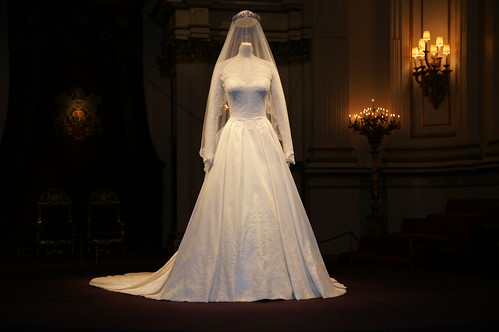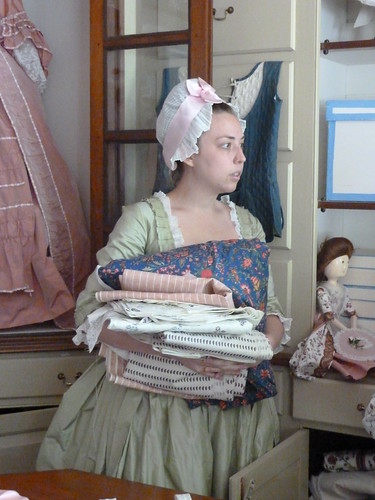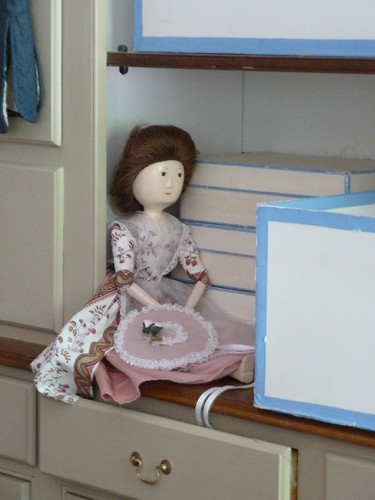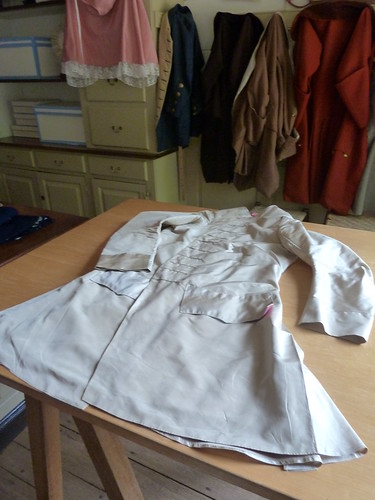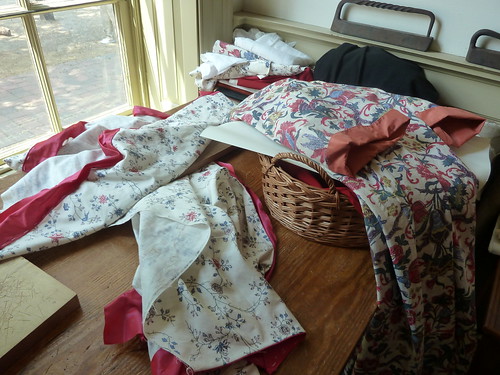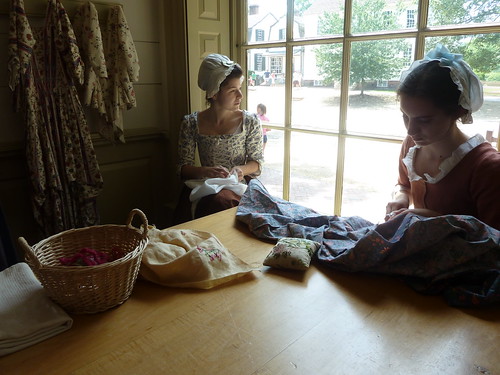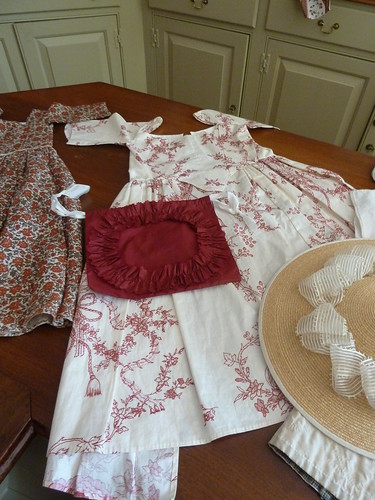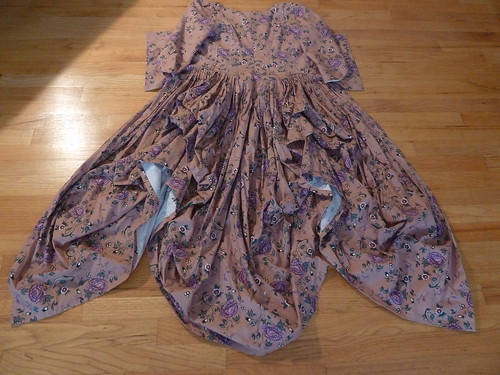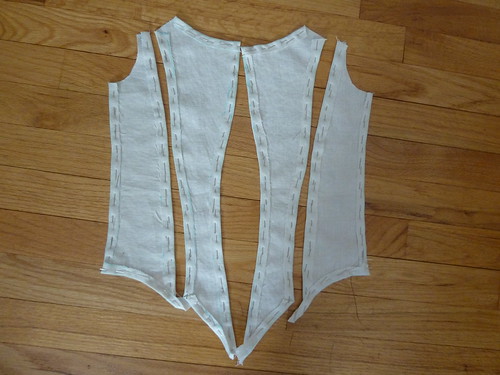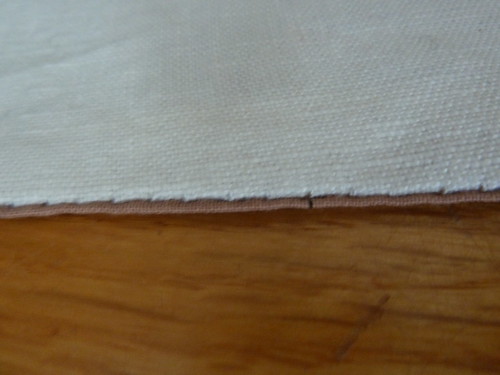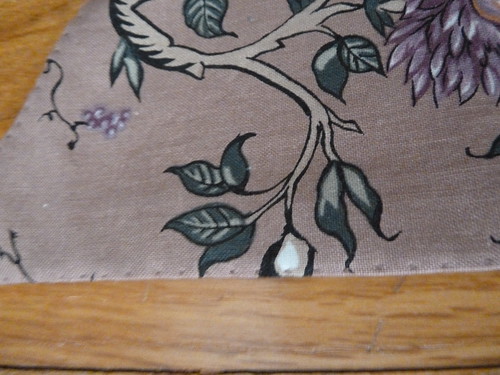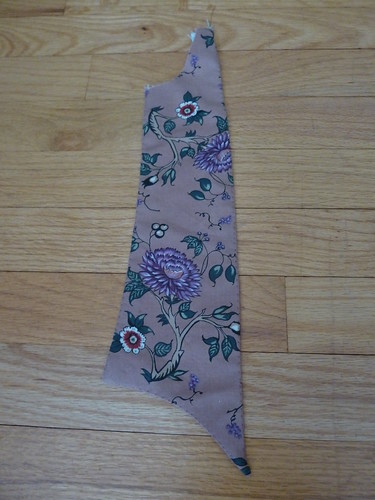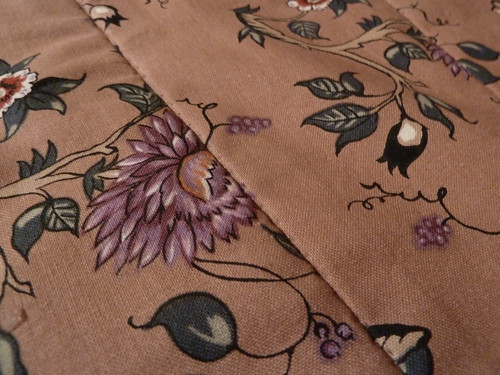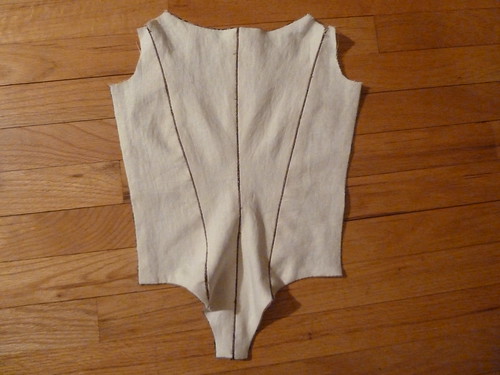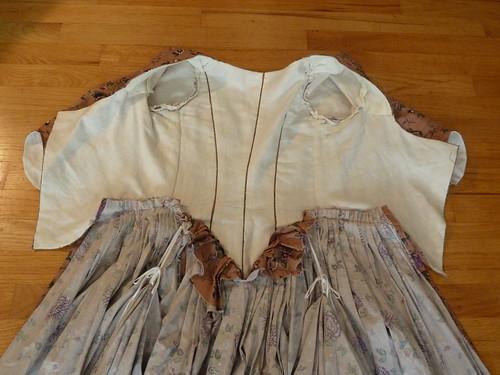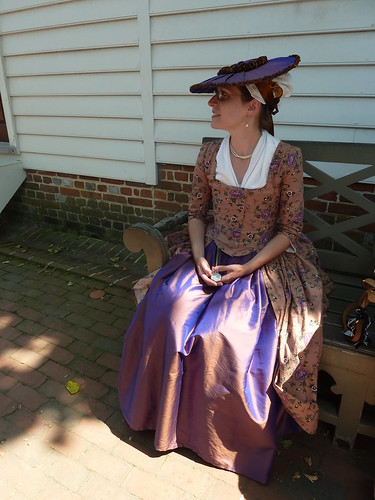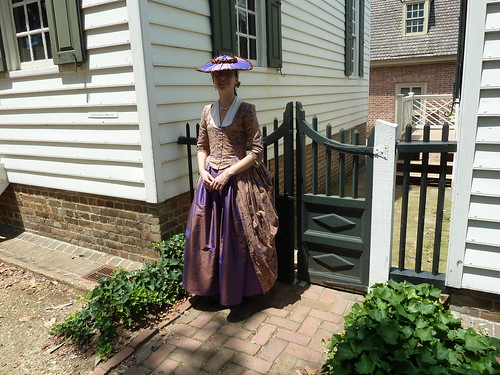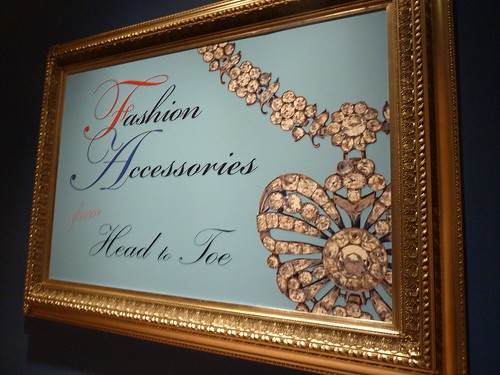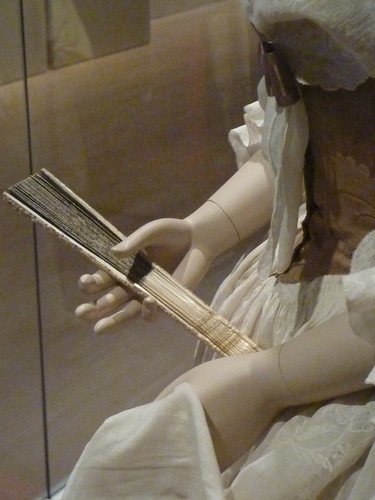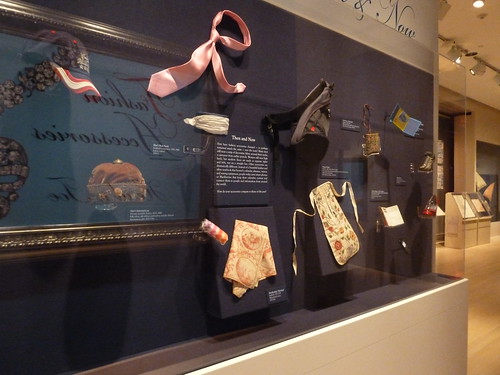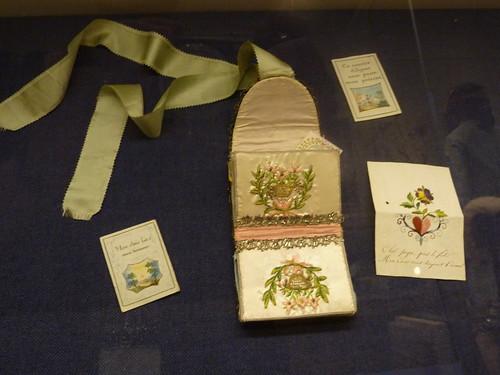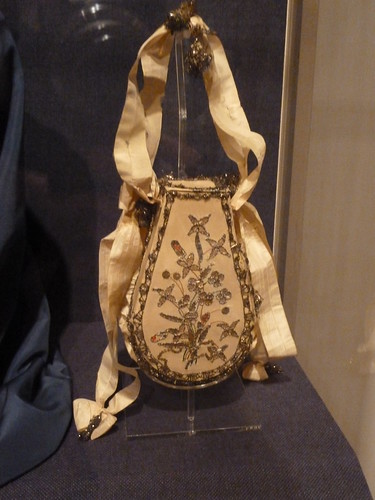A Chintz Quarter Back Gown,
1780-1785
Ashley on the Palace Green at Colonial Williamsburg,
July 2011.
Waaaaaaay back in February, we did a
Threaded Bliss post that featured a
purple and brown changeable silk covered hat. Waaaaaaay back in February, we promised we'd share the gown it accompanied...in March. Well, it's not March any longer...but five months later, at long last, here it is!
The Pattern: This gown is a conglomerative affair in terms of patterning. The quartered back pieces are copied exactly from the gown on page 39 of Janet Arnold's
Patterns of Fashion 1; Ashley has a remarkably 18th-century figure, so patterns taken directly off originals fit her perfectly more often than not (this makes doing exact reproductions of many things feasible and even sensible, huzzah!). In this case, however, the front pieces of the original gown were slightly off in too many places, so I started from scratch there and simply draped them like I usually do. I initially cut the shoulder straps as one with the bodice fronts (as in the original), but somehow, somewhere, something got off and I ended up having to snip them off and do them as separate pieces (which is also perfectly accurate and acceptable, but I'm noting it just because it's another way in which this gown diverges from the original Arnold reference). The sleeves are also taken from the Arnold gown (one day I'll get the knack of draping them myself...one day...).
The back of the gown, laid flat. The skirts are tied up "a la polonaise,"
but they can of course also be worn straight.
Construction Details: At long last, I've remembered to snap some in-progress photos of the construction process on this gown. Here, too, I am copying the original using the details offered in Arnold on page 39, which specifies that "each piece of the bodice is lined with white linen and made up separately...All the pieces of the bodice are then sewn together when they are complete." This is a pseudo-tutorial, not quite as detailed as a full-fledged step-by-step, but definitely more in-depth and photo-heavy than past construction notes have been.
Because each back piece is finished before it is assembled with the others, the first step is to turn under the seam allowances of both the linen lining and the chintz. Both of my fabrics creased nicely, so I didn't feel the need to baste the allowances down on either before putting them together, but you certainly can to hold things in place if you like.
The "quartered" back lining pieces with their seam allowances folded under.
The same is then done to the corresponding outer pieces.
The seam allowance on the lining pieces should be turned under ever so slightly more than it is on the chintz, so that the edge of the chintz remains visible around the edges of the lining. The lining pieces are then placed against the chintz, wrong sides together, and the two stitched together using "le point a rabattre sous la main"
(which will look like a tiny running stitch on the outside and a hem stitch on the inside; see
Costume Close-up for details on this stitch). It is unclear from Arnold's description what kind of stitch was used in the original to attach the lining to the outer fabric; I experimented with using a plain running stitch, but I didn't like the look and opted for the old faithful
Costume Close-up stitch in the end. The armscye edges of the two side/back pieces do not need to be finished in this step because they'll be hidden once the sleeves are attached.
A finished edge of one of the back pieces, showing the lining attached to the chintz.
The other "right" side of the finished piece above, with the tiny running stitch of
"le point a rabattre sous la main" visible along the edge.
The finished piece, which is the left back/side piece. The
unfinished armscye edge is at the upper left of the piece.
Once all of the four back pieces are finished, they are then whipstitched together, catching only the outer fabric. When the pieces are pressed open, this allows the seam to lay perfectly flat.
Two back pieces, joined with whipstitches. Because the whipstitches catch
only the very edge of the pieces they join, you can see the "le point a rabattre
sous la main" stitches on either side of the seam.
The finished quartered back from the inside.
(The "wave" at the bottom accomodates the bum pad)
The front bodice pieces are then finished in the same way as the back pieces, except that the side seams are left open about 2" from the sides so that the chintz can be lapped over the side/back pieces and stitched down, and then the lining folded on the inside and whipstitched into place to conceal the seam. On my quarter back gown, I finished the front/side edge and attached it in the same way as the back pieces with the whipstitched seam; on this example, I elected to do a lapped seam at the front/side instead, just for variety's sake. Both options are documented.
The finished bodice from the right back/side, with the whipstitched quarter
back seams on the left of the photo and the lapped front piece on the right.
Next, the sleeves are assembled using a lapped seam. After their bottom halves are backstitched to the gown's bodice, the sleeve caps are pleated into place directly on Ashley's shoulders. The shoulder strap pieces are then laid over top to cover the unfinished sleeve caps and topstitched into place.
The final step is pleating the skirt. Because the bottom of the bodice is already completely finished, this is a fairly simple process, where the upper edge of the skirts are folded to shape and left to hang free, unfinished, inside to help poof out the skirts. Period gowns employed this technique because it allowed for easier alterations in the future by leaving the maximum amount of fabric safely unspoiled by scissors.
Interior of the gown.
Double polonaise ties are sewn to the inside of the skirts so that they can be worn draped up once, twice, or not at all. In all of the photos here, they are drawn up using two sets of loops and a tie on each side.
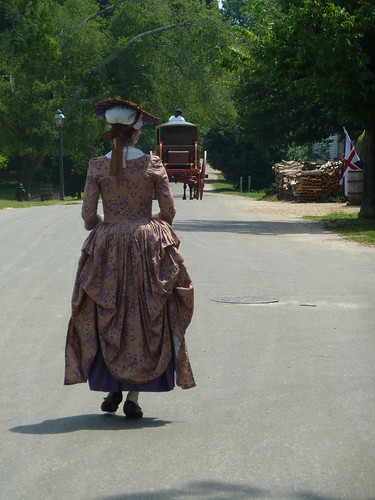 Colonial Williamsburg, July 2011.
Colonial Williamsburg, July 2011.
The Fabric: In scale and pattern, this cotton chintz by Windham is a reproduction of a 1770s cotton print in the collection of Colonial Williamsburg. The colorway, however, is not original; as with the DAR fabric we used on
this gown, this print, too, was produced as part of a quilting line and thus released with multiple altered color variations. The end result is that because of the altered dark ground, this print is not (strictly speaking) appropriate for a 1770s gown, but rather more similar to the patterns and colors that became fashionable in the early to mid 1780s. We were thus very careful to style the gown to reflect the date of the fabric.
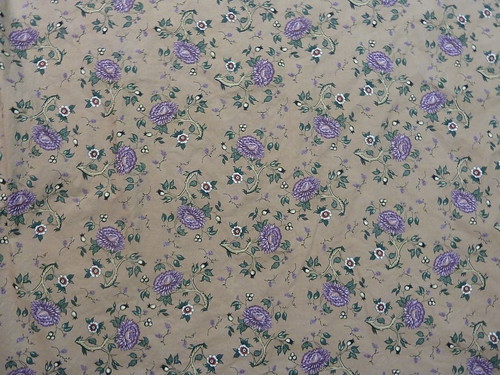
Finishing the Look: Because a chintz like this, which features six different colors, would have been just as much a luxury fabric as silk, it is entirely appropriate to pair this cotton gown with a silk petticoat. Ashley made a purple and brown changeable silk taffeta petticoat, which compliments the color tones perfectly. The fabric was another incredibly lucky Ebay find from a seller in Hong Kong. There was also just enough left over to cover
the hat we shared earlier.
Underneath the gown and petticoat, Ashley wears a linen shift, fully-boned stays, a bum pad and linen underpetticoat to help achieve the fashionable early 1780s silhouette, and a white linen lawn neckerchief. It's tough to see in the photos, but she also has pearl earrings by
Janice Erickson Smith, a hand-knotted pearl necklace she made, secured with a pink silk ribbon, and a silver pocket watch suspended from her waistband on another silk ribbon. The accessories were chosen to reflect the social status conveyed by the fabric choices.
Colonial Williamsburg, July 2011.
Colonial Williamsburg, July 2011.

